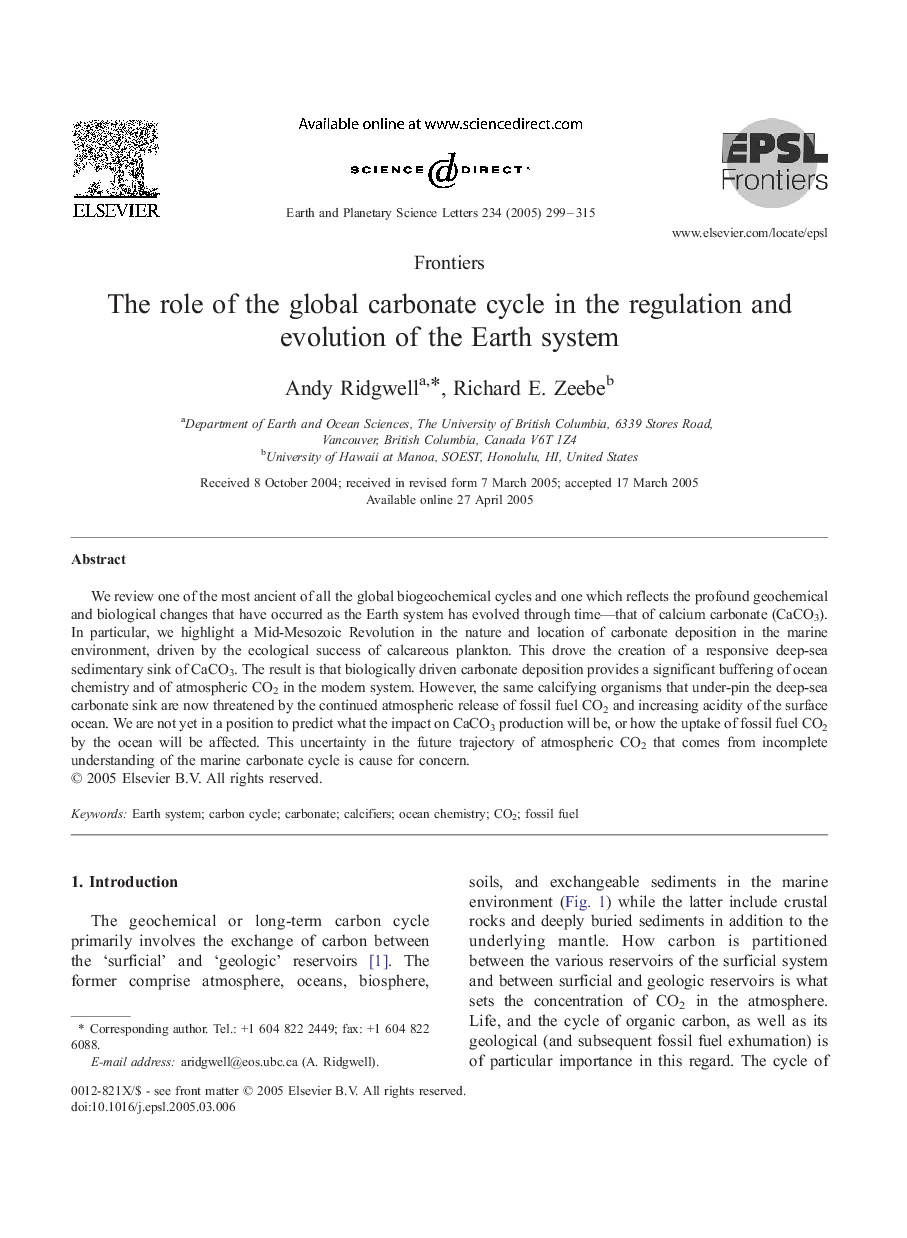| Article ID | Journal | Published Year | Pages | File Type |
|---|---|---|---|---|
| 9522168 | Earth and Planetary Science Letters | 2005 | 17 Pages |
Abstract
We review one of the most ancient of all the global biogeochemical cycles and one which reflects the profound geochemical and biological changes that have occurred as the Earth system has evolved through time-that of calcium carbonate (CaCO3). In particular, we highlight a Mid-Mesozoic Revolution in the nature and location of carbonate deposition in the marine environment, driven by the ecological success of calcareous plankton. This drove the creation of a responsive deep-sea sedimentary sink of CaCO3. The result is that biologically driven carbonate deposition provides a significant buffering of ocean chemistry and of atmospheric CO2 in the modern system. However, the same calcifying organisms that under-pin the deep-sea carbonate sink are now threatened by the continued atmospheric release of fossil fuel CO2 and increasing acidity of the surface ocean. We are not yet in a position to predict what the impact on CaCO3 production will be, or how the uptake of fossil fuel CO2 by the ocean will be affected. This uncertainty in the future trajectory of atmospheric CO2 that comes from incomplete understanding of the marine carbonate cycle is cause for concern.
Related Topics
Physical Sciences and Engineering
Earth and Planetary Sciences
Earth and Planetary Sciences (General)
Authors
Andy Ridgwell, Richard E. Zeebe,
